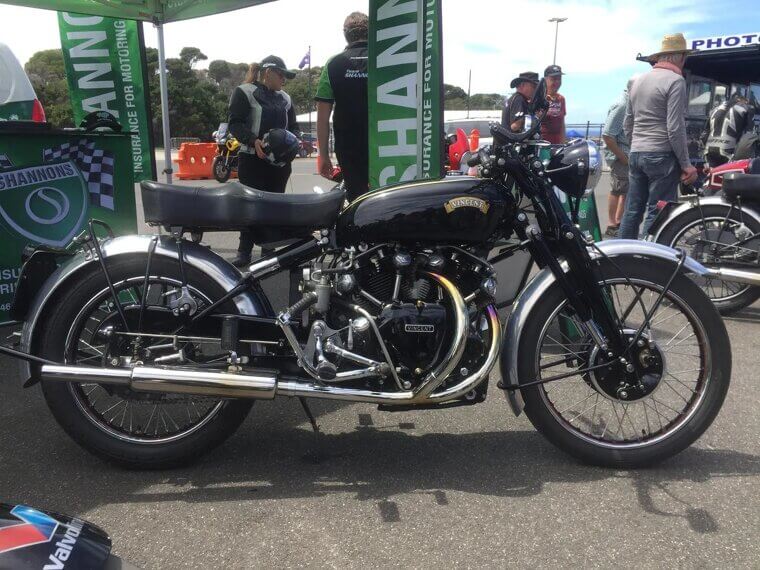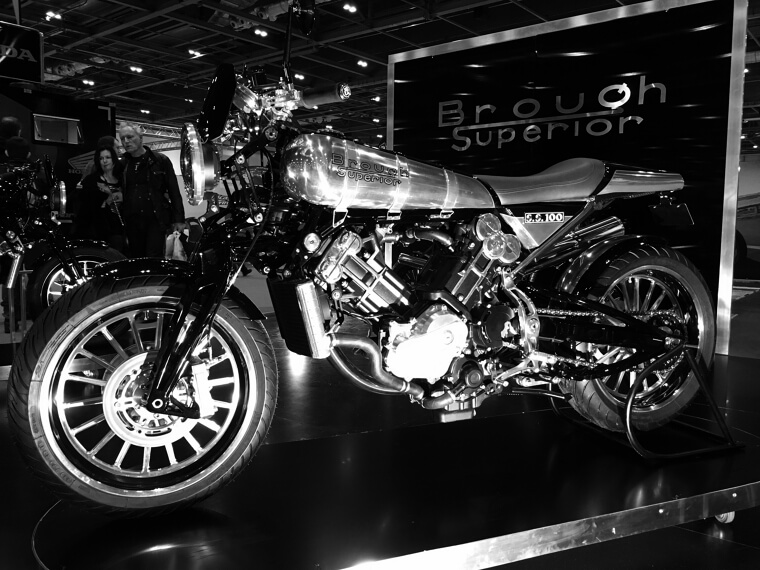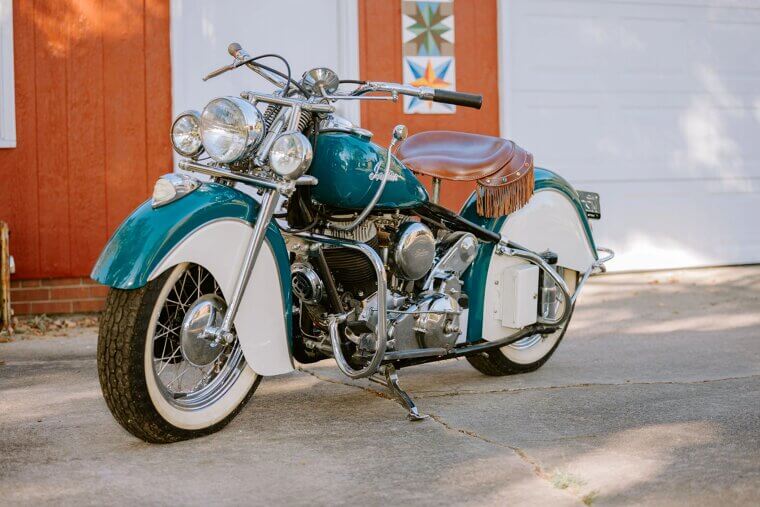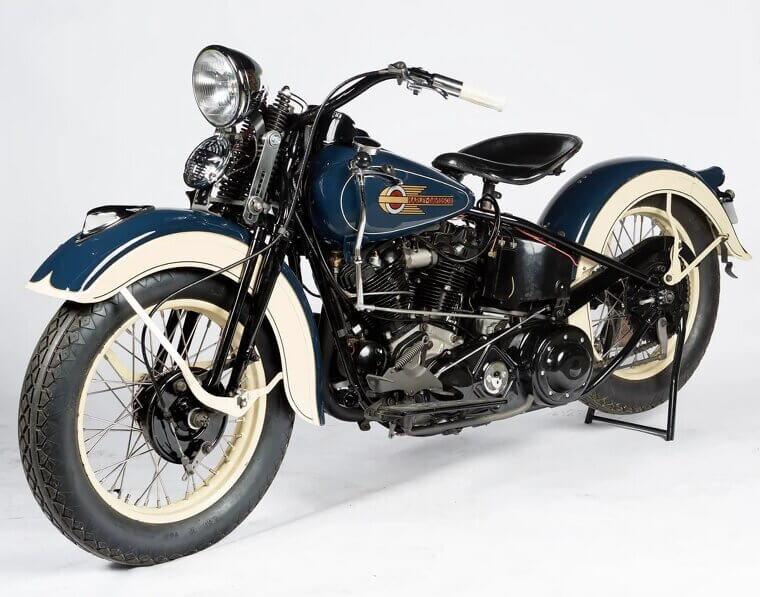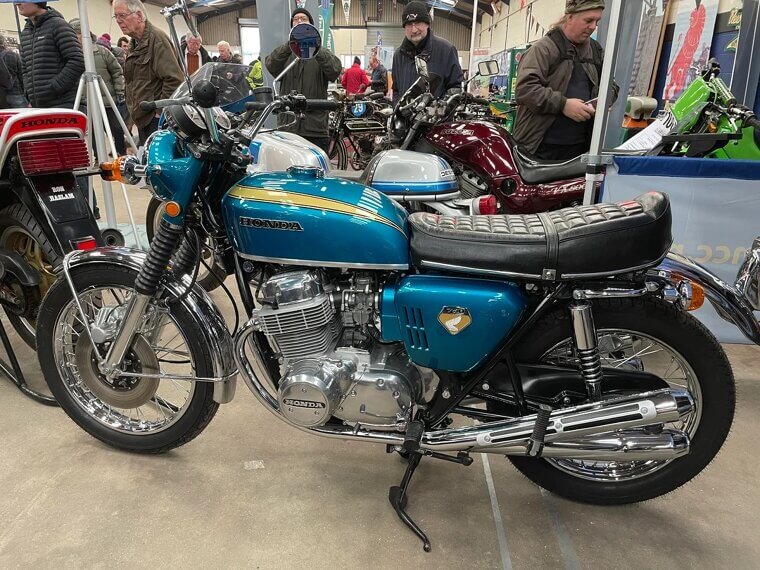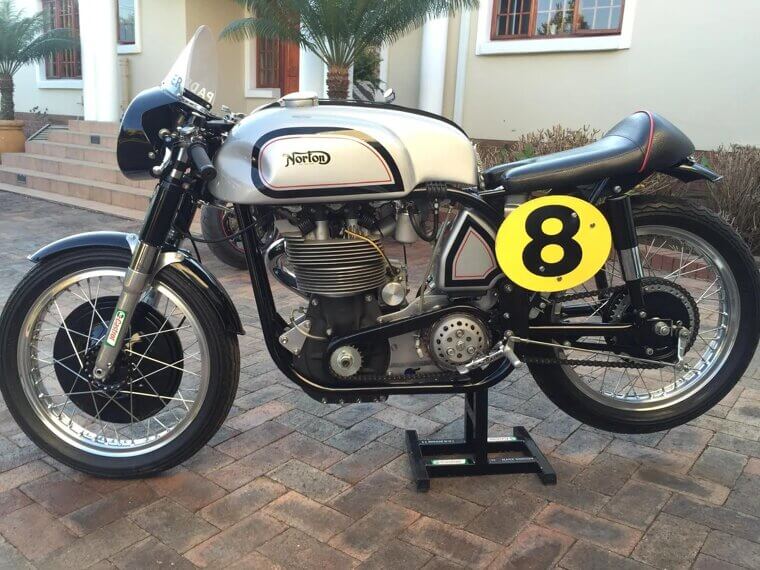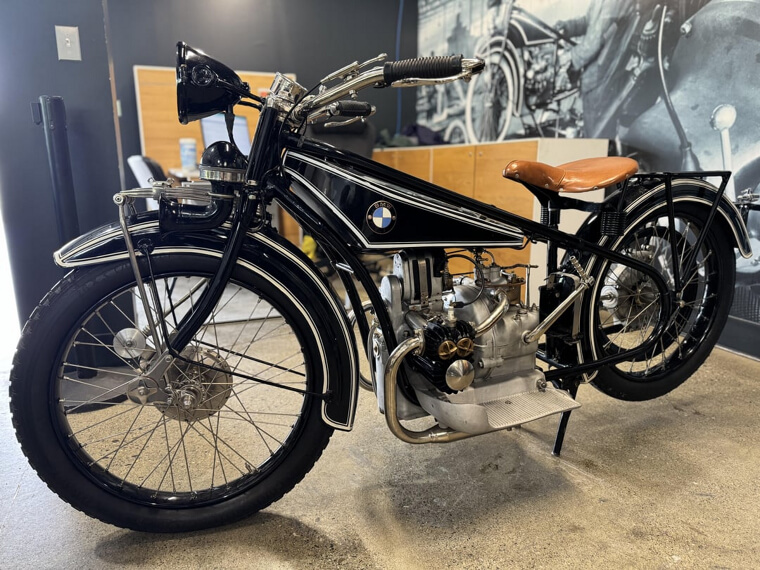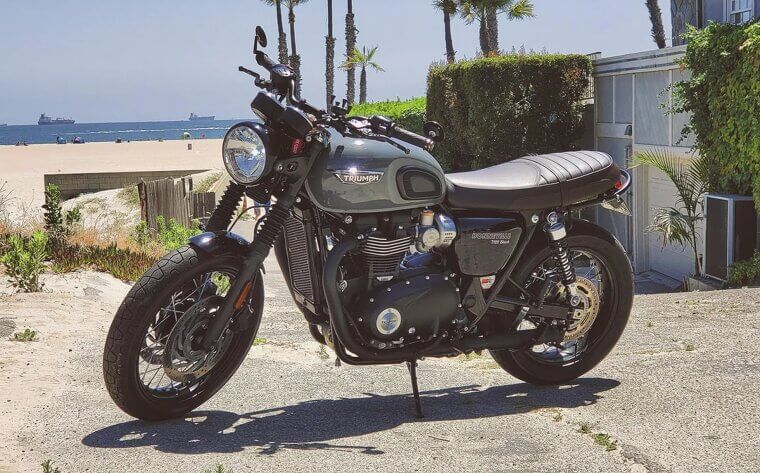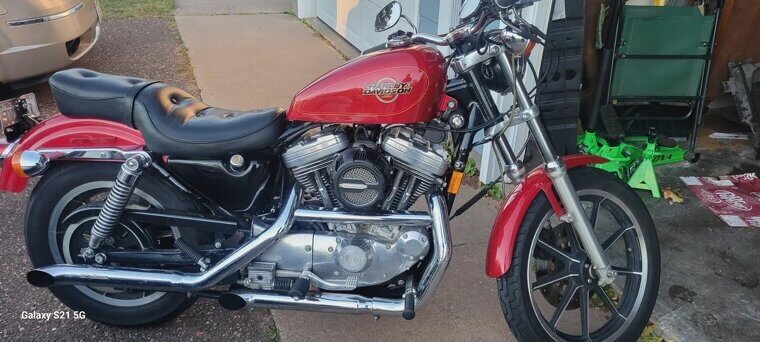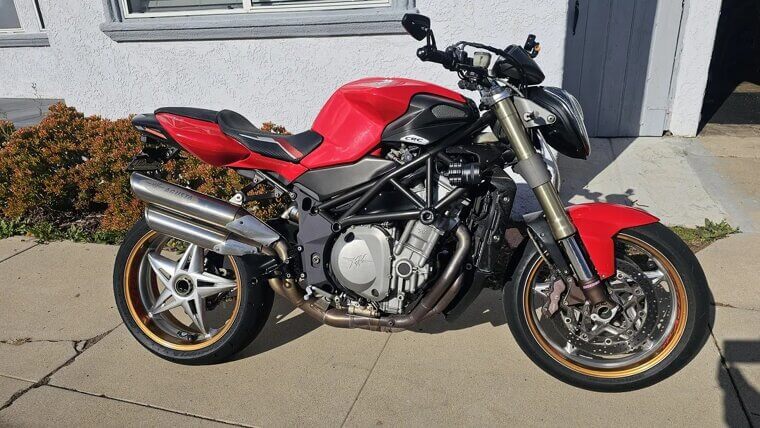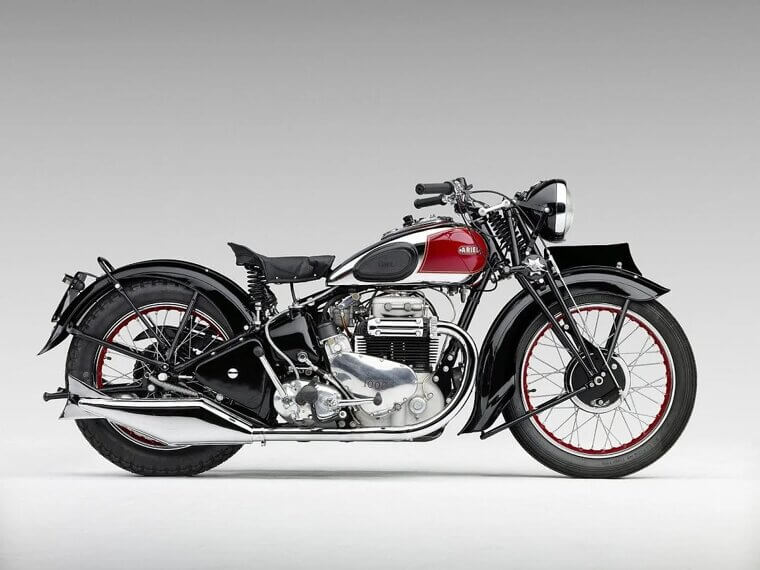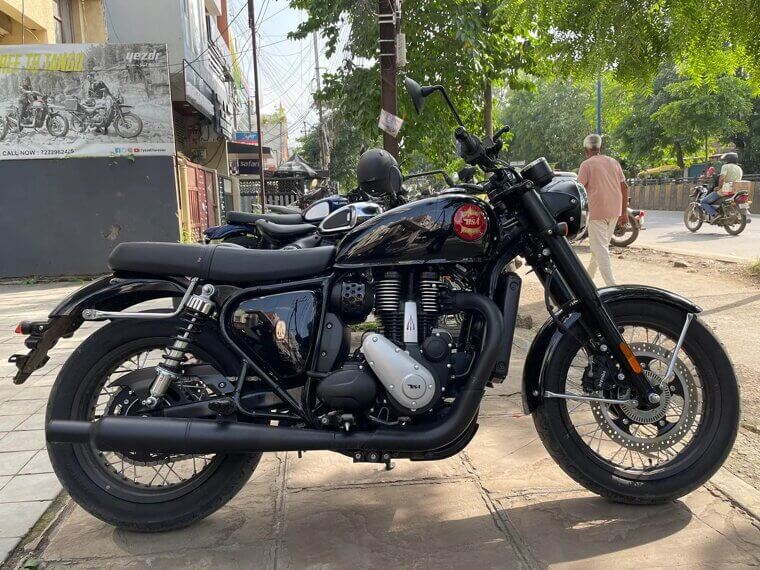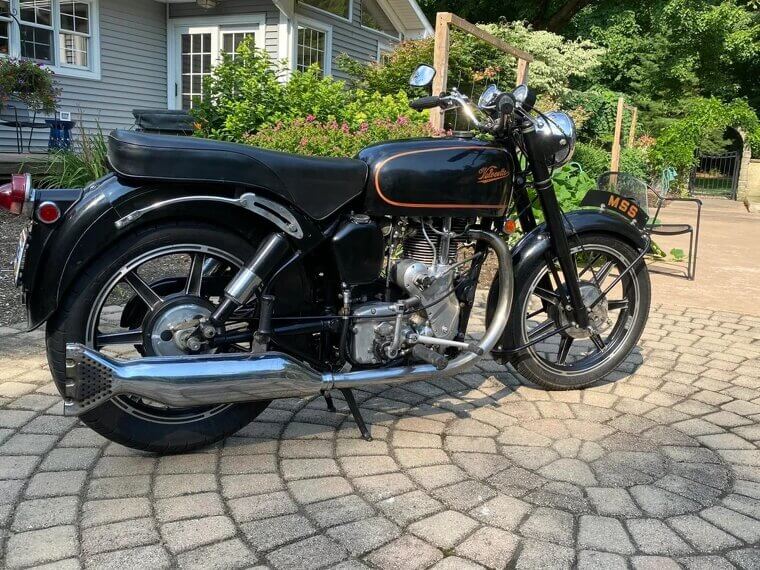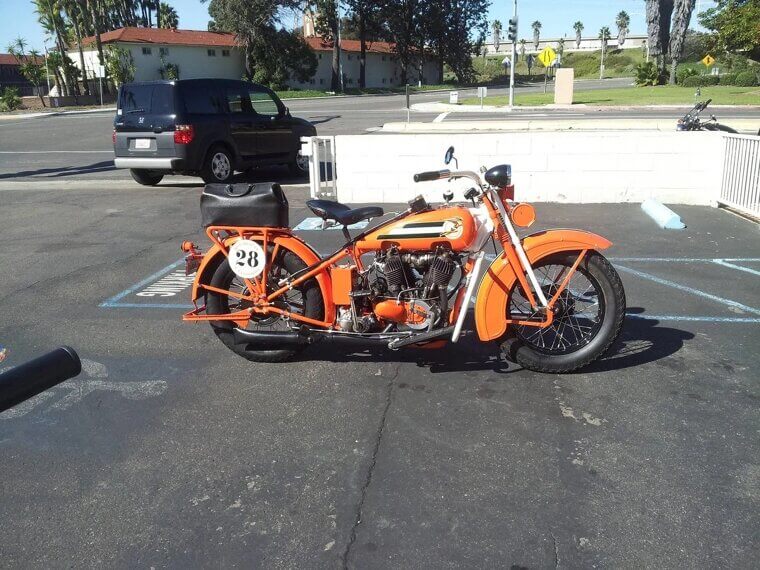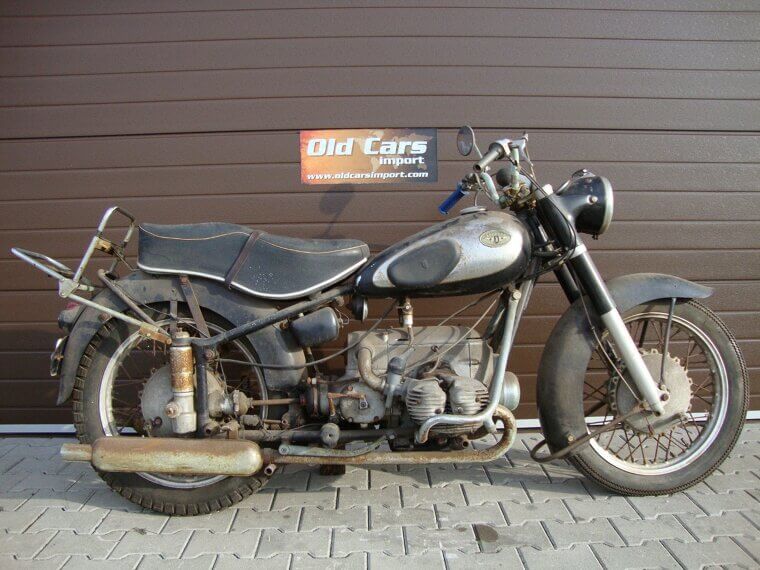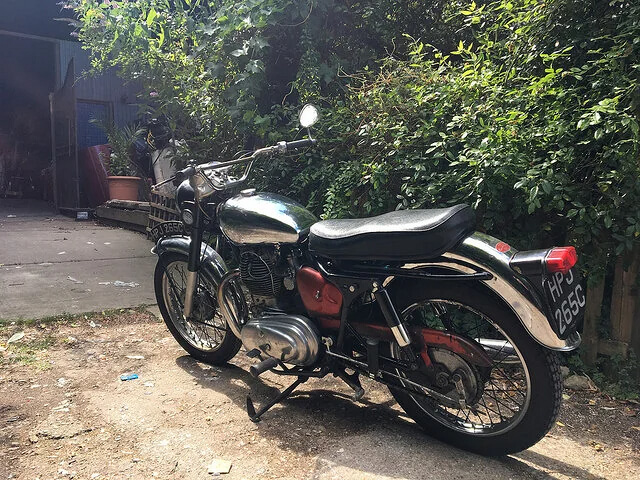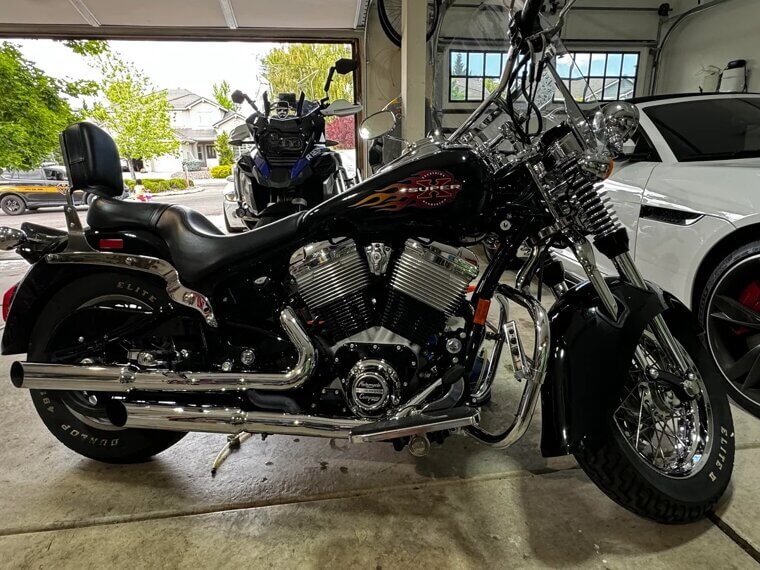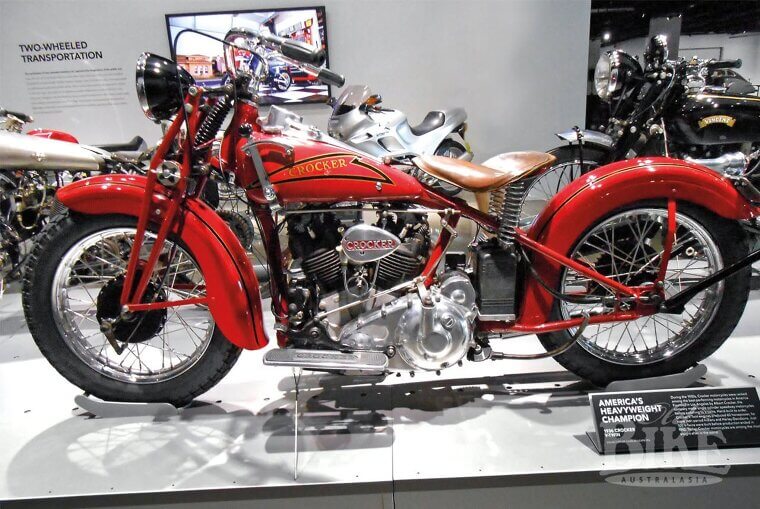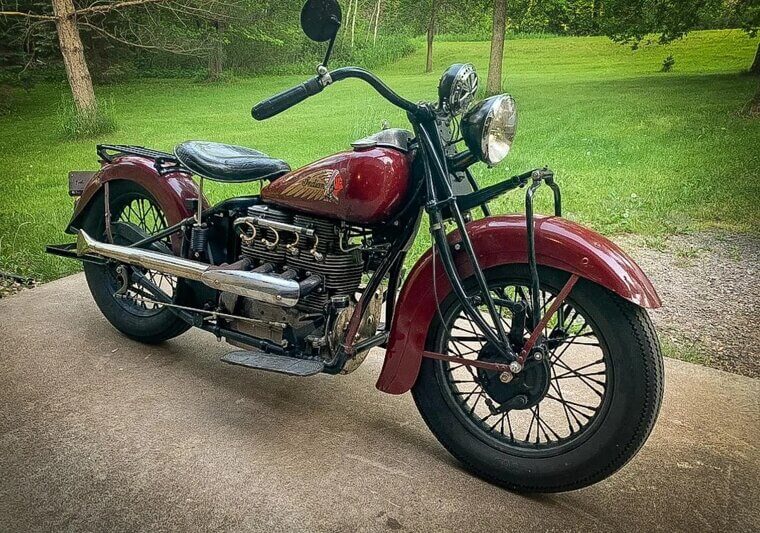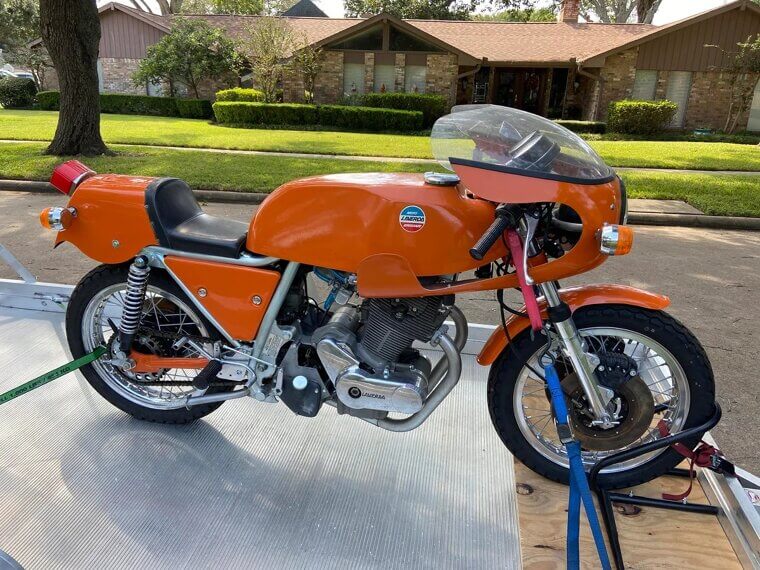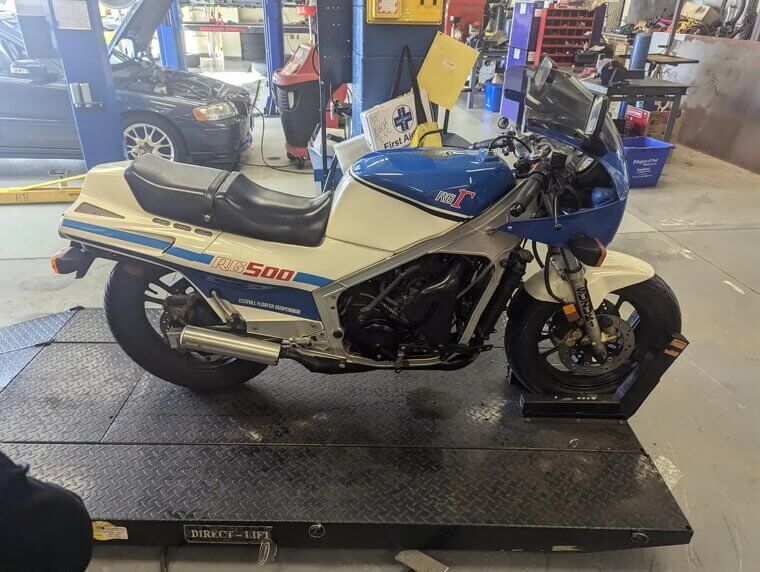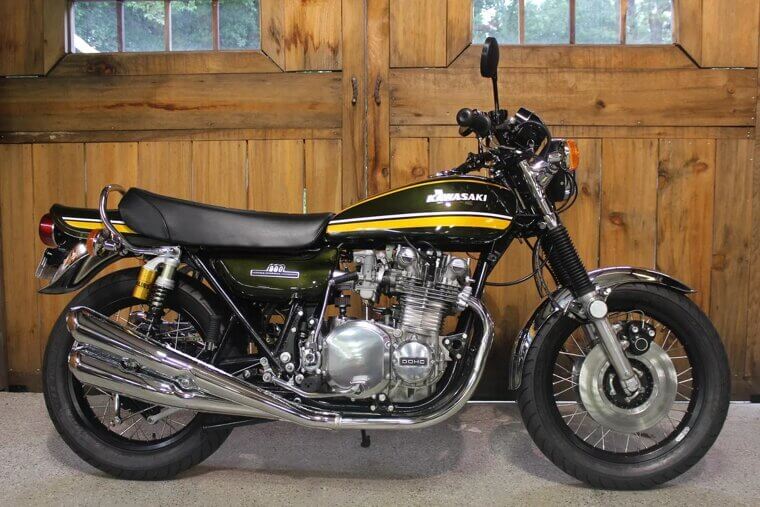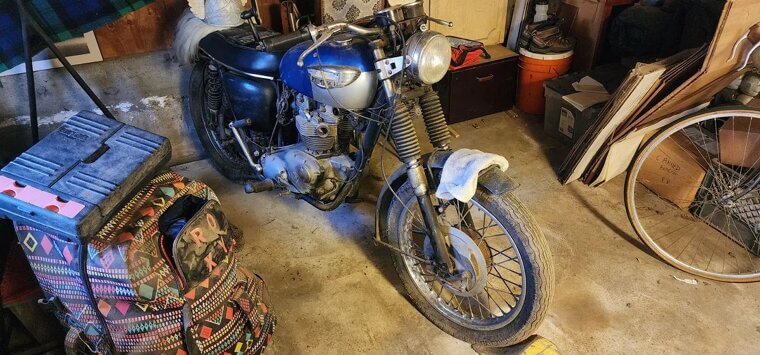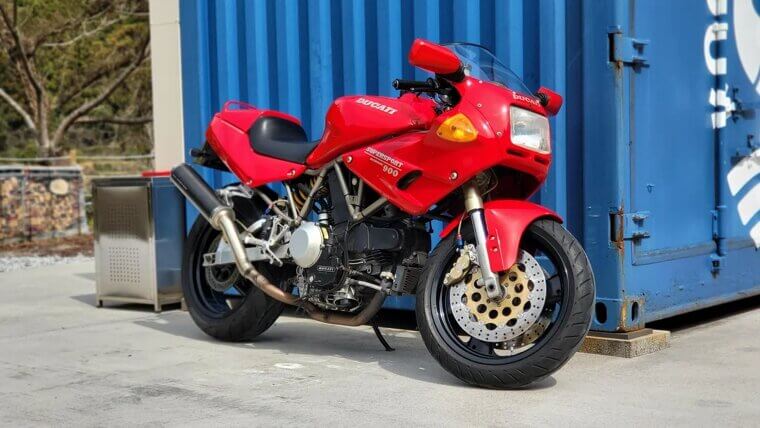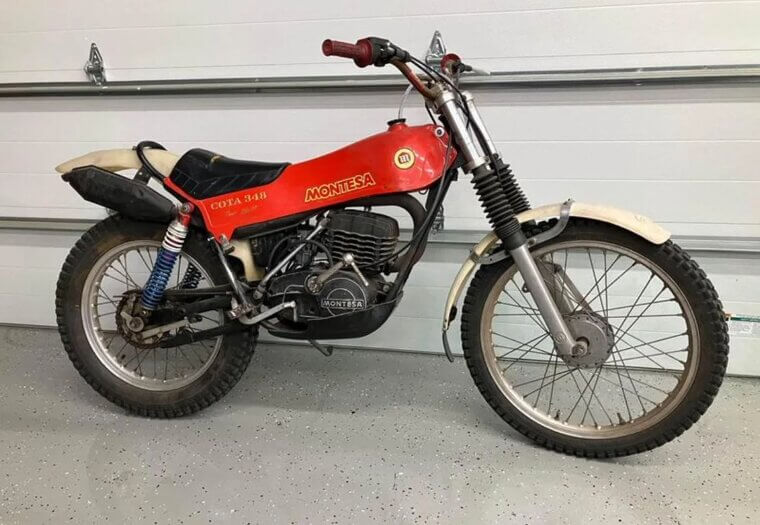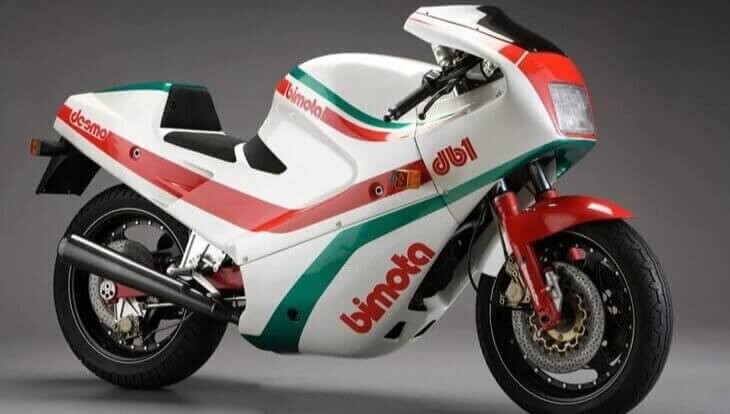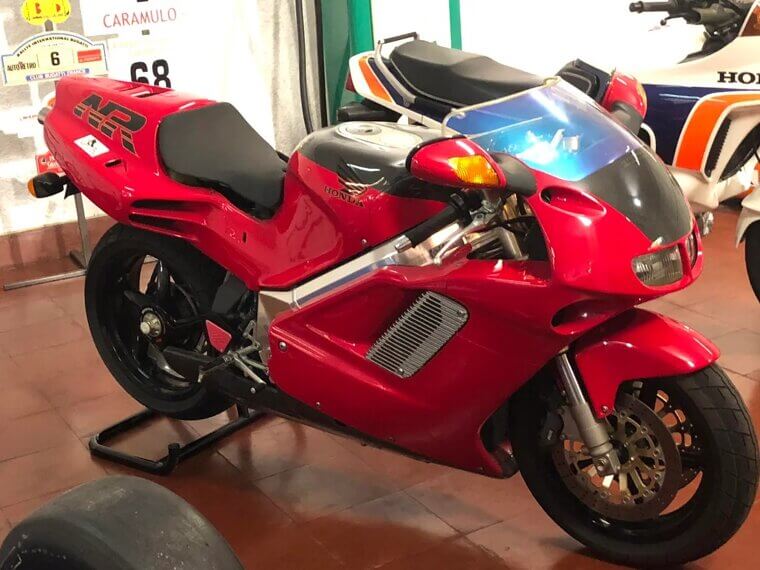Old-School Motorbikes That Are Worth a Pretty Penny
There are many things that can make a motorcycle a classic, from style to performance. These 35 old motorcycles have a little bit of both - and are worth a small fortune. For anyone on the lookout for an old-school motorbike, these are worth keeping a look out for. Some became legends through racing heritage or innovative engineering; others simply nailed the look.
Whether you prefer pristine originals or careful restorations, values keep climbing, so use this guide to spot genuine gems.
Vincent Black Shadow
There’s probably no stronger way to kick off our list than with the one and only Vincent Black Shadow. It first hit the highways in 1948 and quickly established itself as the fastest motorcycle in the world at the time. It doesn’t hurt that the thing still looks fantastic today, and starting values typically reach north of $100,000.
Hand-built in limited numbers with a 998cc V-twin, it combined brutal speed with elegance. Collectors prize matching-numbers bikes with documented history and honest patina.
Brough Superior
“Superior” may, in fact, be a complete understatement. Dubbed the “Rolls-Royce of motorcycles”, the Brough Superior was backed by exquisite, hand-made engineering and was favored by none other than Lawrence of Arabia himself. These days, they typically go for at least $300,000. Early SS100s were road-tested at 100 mph, and each bike was assembled to order. Surviving examples with original JAP or Matchless engines and correct fittings command premiums.
Provenance matters immensely, as do period accessories and certificates, making well-documented bikes the ultimate blue-chip classics.
Indian Chief
The Indian Chief had its heyday during the 40s and early 50s, before the Indian Motorcycle Company was shuttered. (It later had a revival in 1999). Even then, its status as an American icon was already well established. These days, original Indian Chiefs normally go for at least $30,000. Collectors love the valanced fenders, relaxed touring stance, and torquey V-twin built for distance.
Hand-shift examples with correct accessories and period colors bring premiums, and well-restored prewar or early postwar bikes often sell far higher at auction.
Harley-Davidson EL “Knucklehead”
The term “knucklehead” isn’t technically official - it was retroactively applied to the EL by Harley-Davidson fans due to the bike’s uniquely shaped rocker boxes (which have since become synonymous with the brand as a whole). They normally fetch anywhere between $50,000 and $150,000 at auction. Built from 1936 to 1947, the EL introduced Harley’s landmark overhead-valve V-twin and brought genuine highway performance to American riders.
Collectors crave early ‘36s, original paint, and matching-numbers drivetrains. Correct accessories and documented provenance can push pristine examples into six-figure, museum-worthy territory.
Honda CB750 Sandcast
The term “superbike” has since been embraced by the motorcycle industry as a whole, but back in the 60s people it was still a new concept. Though some other bikes also received the title of “world’s first superbike”, the Sandcast’s prowess cannot be understated. As such, it normally goes for around $50,000, at least. Early 1969 K0 “sand-cast” bikes used rougher sand-mold cases before die-casting, making them rarer.
The 736cc inline-four, front disc, and electric start reset expectations. Unrestored examples with HM300 pipes and early VINs bring serious premiums.
Ducati 750 SS
Ducati is one of the biggest names in the motorcycling world, and is synonymous with making very, very fast bikes. Only 100 750 SSs were initially made, making them some of the rarest specimens on this list. The 750 SS was made famous as the bike that won the Imola 200. They normally fetch at least $100,000. Built around a 748cc L-twin with desmodromic valves, it delivered race-bred handling and charisma.
Early green-frame examples with factory documentation, original fiberglass, and correct carbs are especially coveted.
Norton Manx
Here’s an interesting fact about Norton: they contested every single Isle of Man TT race from 1907 all the way through to the 70s. Suffice it to say, racing - and the spirit of competition - have always been in their blood. The Manx became iconic for its featherbed frame and single-cylinder engine, and normally fetches at least $50,000.
Hand-built 350cc and 500cc DOHC singles with Roadholder forks and the McCandless-designed chassis delivered uncanny stability. Bikes with documented TT history and correct magnesium parts bring premiums.
BMW R32
BMW shouldn’t require any introduction. Suffice it to say, they’re one of the biggest names in the automotive industry. The R32 was their very first motorcycle, and was an innovation in and of itself due to its flat-twin boxer engine and shaft drive. Expect it to be worth at least $100,000 at auction.
Introduced in 1923 and designed by Max Friz, the R32 set BMW’s template for durability and balance. Collectors value original toolkits, correct carburetors, and factory finish. Provenance and unmolested mechanicals push prices higher.
Triumph Bonneville T120
Though the Bonneville was never going to perform as well as some of the early “superbikes” that were coming out at the time, it became an icon in its own right and was embraced by custom and cafe racers alike. Some go for as little as $20,000 at auction, while others bring home north of $50,000. Buyers prize early pre-unit models, TT Special variants, and original two-tone paint.
The 650cc parallel-twin, twin Amal carbs, and classic exhaust note define its charm, especially with verified history and sympathetic restorations.
Harley-Davidson XR750
Don’t be surprised to see more than a few Harley-Davidsons on this list. The XR750 was yet another incredible success for the company, and dominated flat track racing in the 70s. It was also the stunt bike of choice for none other than Evel Knievel himself. They typically go for at least $60,000 or more.
Early alloy-head racers with matching cases and documented AMA history are the most coveted, especially unrestored examples. Period-correct exhausts, spares, and factory paperwork can add sizable premiums for serious collectors.
Matchless G50
Don’t let its small size fool you - the Matchless G50 has plenty of kick and power. Indeed, among the club and GP race scene in the 50s and 60s, the G50 truly was matchless - erm, unmatched. They’re worth at least $50,000 today. Collectors prize original racing trim, tidy maintenance records, and period-correct bits like rearsets and alloy tanks.
Lightweight, tractable, and surprisingly durable, a well-prepped G50 still thrills at vintage events. Provenance from notable privateers or factory support can move prices well beyond guide estimates.
MV Agusta 750 S
The 750 S is another rare machine, this time manufactured by MV Agusta. Though it was intended to replace the 600, only some 500 units of the 750 S were made, which makes sense when you consider that they were put together by hand. They’re worth at least $80,000. Hand-assembled inline-four charisma, signature red-and-silver livery, and that unmistakable Italian craftsmanship make it a blue-chip prize.
Collectors chase matching-numbers examples with factory paperwork and original exhausts. Low-mileage survivors or expert restorations from known specialists regularly soar well above guide prices.
Ariel Square Four
Take a guess as to where the Square Four got its name. Indeed, designed by the legendary Edward Turner, the Ariel Square Four became iconic due to its unique square four-cylinder layout and the fact that it performed beautifully, even for a pre-war machine. They can fetch as much as $70,000 at auction nowadays, if not more.
Later Mk II models adopted alloy heads, improved cooling, and smoother manners. Collectors value original silencers, correct panels, and paperwork. Well-sorted riders remain surprisingly usable.
BSA Gold Star
Another exquisitely crafted, hand-built machine, the BSA Gold Star does, indeed, receive a gold star for its meticulous engineering alone. Each bike came with a documented dynamometer results sheet, allowing owners to see how much horsepower could be produced. Suffice it to say, they were impressed, and the Gold Star is normally worth at least $50,000.
Collectors favor DB34 Clubman-spec machines with original alloy barrels, Amal GP carbs, and clip-ons. Proven race history, factory records, and correct toolkits push pristine examples well beyond typical guide prices.
Velocette Thruxton
The Velocette Thruxton - sometimes just called the Thruxton, sometimes the Venom Thruxton - is an iconic British cafe racer, whose production was cut short by the closing of the company behind it. They’re typically worth at least $70,000. Based on the Venom, its tuned 499cc single with big-fin head and Amal GP carb delivered serious clubman pace.
Clip-ons, rearsets, and close-ratio gears made it a favorite at Thruxton and cafe haunts. Matching-numbers bikes with original fiberglass tanks and paperwork command firm premiums.
Harley-Davidson JD
Though they’d been around since 1903, the story of Harley-Davidson as we know it pretty much began here with the JD, which introduced the now iconic teardrop-shaped engine. They’re pretty rare, and as such, typically fetch at least $100,000. Built in the late 1920s, these big-twin tourers showcased handsome nickel-plated fittings, rigid frames, and graceful tanks that set Harley’s silhouette for decades.
Collectors pay premiums for matching-numbers examples, original paint, and complete accessories. Documented history and sympathetic mechanical rebuilds can push concours-quality bikes well into six figures.
Zundapp KS 601
The Zundap KS 601 is probably one of the least recognized motorcycles on our list. Don’t be mistaken, though - they still fetch a handsome sum at auction (at least $50,000), with “Green Elephant” sidecar setups (think Indiana Jones and the Last Crusade) being particularly sought after. Powered by a 597cc flat-twin and shaft drive, the KS 601 built a reputation for rugged touring.
Matching-numbers rigs, original paint, and documented Elefantentreffen or military history add value. Correct Bosch electrics and period accessories push prices upward.
Royal Enfield Interceptor 750
The Interceptor name recently made a comeback in 2018, but it first found success way back in the late 60s and early 70s before it was discontinued. The 750 Interceptor was one of the fastest racers in production, and is much rarer than many Norton and Triumph models. It fetches at least $30,000 today.
Collectors look for Series II bikes with strengthened cases, twin Amal carbs, and original chrome tank panels. Low-production, U.S.-market survivors with matching numbers and paperwork bring premiums.
Excelsior Super X
The Excelsior Super X may not be the most well-known model on this list, but its arrival onto the scene was impactful as it was one of the first V-twins to challenge Harley and Indian’s domination. They typically fetch over $100,000. Introduced in the mid-1920s, the 45-cubic-inch twin delivered surprising speed and durability, helping ignite America’s performance street scene.
Surviving machines are scarce because production ended early after Schwinn shuttered the brand. Matching-numbers bikes with original paint, correct Schebler carburetors, and documented provenance command serious premiums.
Crocker Big Twin
Nicknamed “Big Twin”, this powerful twin-cylinder machine from Crocker was probably the fastest motorcycle of the pre-war era. It’s also an exceedingly rare bit of engineering and is worth over $300,000. Hand-built in Los Angeles by Al Crocker, each was effectively a bespoke hot rod, tuned for the buyer and famous for out-running contemporary Harleys and Indians.
With production numbers tiny and many lost to hard use, survivors are coveted. Matching-numbers engines, documented history, original parts, and correct finishes can rocket exemplary examples far beyond guide prices.
Sunbeam Model 9
Though it’s another “sleeper hit”, the Sunbeam Model 9 quickly established itself as both a reliable and powerful sports tourer in the 20s and 30s. Backed by British craftsmanship and elegant styling, they fetch anywhere between $30,000 and $50,000. Collectors prize well-sorted 493cc OHV singles with girder forks and classic black-and-gold tanks. Original paint, matching numbers, and tidy paperwork lift values.
As do Model 90-style upgrades. Smooth, torquey manners make them usable at vintage rallies, and correct period accessories or known provenance can push top examples higher.
Indian Four
Originally built in 1928, the Indian Four was discontinued before the war and never returned to the roads. That’s a shame, because it’s probably one of the finest-looking motorcycles on this list with its art deco stylings. They typically go for at least $100,000. Powered by a silky inline-four, it delivered refined touring manners and a distinctive exhaust note.
Ace Four roots add cachet, while correct trim and matching numbers matter to collectors. Documented history and careful restorations can send top examples comfortably into six-figure territory.
Yamaha TZ750
Despite being one of the biggest names in motorcycling (and also guitar-ing, for some reason), we haven’t seen any Yamahas yet. That changes with the TZ750, one of the most legendary racing motorcycles in history. They’re typically worth at least $75,000. Race-bred and ferociously fast, the 747cc two-stroke four delivered outrageous power and wheelspin, defining an era. Kenny Roberts famously tamed it at Daytona, cementing the bike’s legend.
Surviving factory and privateer machines with documented provenance, original exhausts, and spares command premiums, especially unrestored examples or meticulous period-correct restorations.
Moto Guzzi V8 “Otto Cilindri”
Ranked as one of the greatest motorcycles of all time by none other than the Discovery Channel, the Moto Guzzi V8 (or “Otto”) was also one of the most ambitious Grand Prix bikes of all time. As a museum-worthy bit of engineering, they ain’t exactly cheap, and will set you back around $300,000. Its 500cc eight-cylinder engine with tiny pistons made it a technological moonshot.
It was blisteringly fast, but fiendishly complex. Surviving examples and factory replicas are scarce; documented history, original spares, and race provenance push values higher.
Laverda SFC 750
Though they aren’t around anymore, Laverda was known for its innovation and immaculate Italian style. The SFC 750 is considered to be a work of art, and its orange bodywork is iconic. It easily fetches some $100,000 at auction. Hand-built for endurance racing, the SFC—Super Freni Competizione—packed a tuned 744cc parallel twin, close-ratio gearbox, and lightweight fiberglass fairing.
Collectors prize early 1971–72 drum-brake bikes and later twin-disc models, especially with matching numbers, factory paperwork, and original orange panels. Properly sorted examples remain thrilling, reliable, and collectible.
Suzuki RG500 Gamma
Though its production only lasted two years, the RG500 Gamma quickly established itself as a force to be reckoned with. A road-legal version of the powerful GP two-stroke, it goes for at least $50,000. Powered by a raucous 498cc square-four with twin cranks, it delivered a razor-sharp, peaky rush and minimal weight in a box-section frame.
Collectors covet unmolested survivors with original bodywork and exhausts. Limited imports, low mileage, and documented history push values higher, especially for bikes with factory spares and paperwork.
Kawasaki Z1 900
Introduced way back in 1972, the Z1 (and later Z1 900) was Japan’s very first liter-class superbike, and was designed to compete with the legendary Honda CB750. These days, it’s worth at least $40,000. Powered by a 903cc DOHC inline-four with a front disc and four Mikuni carbs, it mixed reliability with genuine 130-mph pace.
Collectors prize early 1973 bikes, original four-into-four exhausts, and the candy brown/orange paint. Matching numbers, factory toolkits, and clean histories push exceptional survivors and sympathetic restorations well beyond guide prices.
Harley-Davidson WLA
As a proud American brand, it makes complete sense that Harley-Davidson would ingratiate itself with the military. The WLA was the result of this partnership, and is nowadays something of a WWII relic, worth at least $40,000. Built in vast numbers with a rugged 45-cubic-inch flathead V-twin, it wore olive-drab paint, blackout lights, and heavy-duty racks.
Many went overseas via Lend-Lease, while Canadian WLC variants added unique fittings. Collectors prize matching-numbers examples with leg shields, rifle scabbards, tool rolls, and paperwork; untouched survivors command healthy premiums.
Triumph TR6 Trophy
Introduced as a replacement for the popular Tiger model, the TR6 Trophy was highly favored by the legendary Steve McQueen and won even more acclaim during its competition years. These days, it’s worth some $50,000 or so. Based on the 650cc parallel-twin, the TR6 blended tractable torque with light, precise handling that made it a desert-sled favorite.
High pipes, quick-change wheels, and simple, rugged construction endeared it to privateers. Collectors chase matching-numbers bikes with documented ISDT or off-road provenance, original paint, and correct scrambler trim.
Rudge Ulster
One of the oldest models on this list, the Rudge Ulster is also one of the least known, as production ended at the outbreak of WWII. It had a racing pedigree and advanced engineering for its time, and is worth at least $50,000. Collectors prize well-sorted 500cc singles with four-valve heads, girder forks, and tidy period details. Matching numbers, original paint, and documented competition history drive premiums.
Smooth, tractable performance and elegant lines keep demand strong, and properly restored examples remain engaging, reliable riders at vintage events.
Ducati 900 SS
The 900 SS was a follow-up to the legendary 750 SS, exceeding that famous bike’s own legendary prowess and performance. It typically fetches around $40,000 at auction. Built around a 864cc bevel-drive L-twin with desmodromic valves, the 900 SS delivered razor-sharp handling, strong midrange, and unmistakable Italian charisma. Early round-case examples and authentic “green frame” styling cues are especially prized.
Matching-numbers engines, original Conti silencers, and factory paperwork raise values. Clean, unrestored survivors or expert restorations from known specialists routinely outperform price guides at major auctions.
Montesa Cota
An offshoot of Honda, Montesa was responsible for this Spanish-made trials bike. It’s a rare model that you don’t see spoken about often, and fetches a modestly handsome sum of around $20,000. Collectors favor early Cota 247 and 348 two-strokes with original tank/seat units, alloy rims, and tidy controls. Light, tractable power and featherweight frames make them perfect for observed trials and vintage events.
Period documentation, matching numbers, and uncracked fiberglass boost value, while sympathetic mechanical refreshes keep these agile mountain-goats reliable without hurting authenticity.
Bimota DB1
The DB1 is responsible for saving Bimota from certain doom. It’s an exotic, Ducati-based motorcycle with style to match and racing pedigree. They were only made in a limited number and, as such, normally fetch around $50,000. Hand-built in Rimini around Ducati’s desmo 750 L-twin, it featured a compact chrome-moly space frame, fully enclosed bodywork, and razor-sharp geometry.
DB1S and DB1SR variants upped the spec for homologation. Collectors chase original fairings, undrilled rotors, and factory paperwork; low-mileage, matching-numbers bikes command strong premiums.
Honda NR750
Ending our list with the most recent motorcycle, the Honda NR750 is already legendary despite its relatively young age. Its exotic engineering and oval pistons have made this one worth at least $100,000. Built in very limited numbers in the early ’90s, the street-going NR wrapped its oval-piston V4 and 32 valves in exquisite bodywork and a single-sided Pro-Arm swingarm.
Fit and finish bordered on jewelry, and many were cosseted as collectibles. Low-mileage, unmodified examples with factory accessories and paperwork command the strongest premiums.


